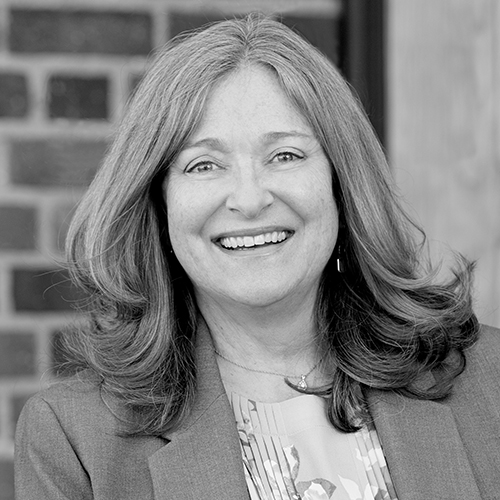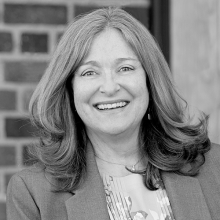A Paralegal's Perspective on the Proposed California Paraprofessional Program
 The comment below was submitted to the State Bar of California in support of the proposed Paraprofessional Program. The program would authorize paraprofessionals to provide legal advice in areas such as family, consumer debt, landlord/tenant, employment/income, and collateral criminal cases, as well as represent parties in court (excluding jury trials).
The comment below was submitted to the State Bar of California in support of the proposed Paraprofessional Program. The program would authorize paraprofessionals to provide legal advice in areas such as family, consumer debt, landlord/tenant, employment/income, and collateral criminal cases, as well as represent parties in court (excluding jury trials).
It is understandable that some attorneys view the proposal of the California Paraprofessional Program Working Group (CPPWG) as one of existential proportion, an invasion of the hard-won turf on which they stand in ready defense of their livelihood and profession. They hold aloft a proud shield with “Education, Training, and Experience” as its motto. The turf they defend is the entire legal landscape, deeded to them by the attorneys of generations ago. But perhaps there is some terrain on the fringes that could be parted with—not the richest land, not the most fertile, but land they are not particularly inclined to till.
The most frequent, noble, and ardent cry sent up from this line of defense is one of protecting the masses from inferior actors, mere pretenders to legal proficiency, but it was none other than Montesquie, the French judge and political philosopher (who authored The Spirit of Laws in 1748, in which he laid out the blueprint for the separation of governmental powers into three branches) who stated, “There is no greater tyranny than that which is perpetuated under the shield of law and in the name of justice.”
Attorneys are not wrong to think there is something special in what they do; the misperception may be in viewing it as entirely unique. The debate rages across many interrelated points, but centers on a single question: Whose needs are we trying to meet? That lies at the heart of the matter.
People inside the legal system may be inured to the stress that the words “legal problem” can impart. We refer to one as a “legal issue” or “matter” or “case”; they represent our day-to-day work. Self-represented litigants or those with insufficient access to legal assistance call it the thing that is consuming, disrupting, or ruining their life—the thing they’re desperately afraid of, the thing they don’t know how to resolve. Custody, eviction, debt, or employment matters are all about loss—things already lost, things people fear they are about to lose.
For a moment, imagine yourself on the deck of the Titanic, eyes cast down into the swirling and icy depths, the crisis in full sway around you. You spot a lifeboat; the people already in it call to you to jump in. Today, many are aware that the Titanic was bearing too few lifeboats for the number of passengers it carried. Less well known is the fact that the number of lifeboats rigged onto the Titanic, known to be insufficient for the passengers actually aboard, nonetheless exceeded the number that the British Board of Trade regulations required. It’s true—the regulatory system then in effect did not stipulate that lifeboat capacity meet every passenger’s needs. The math proved tragic along with all other aspects of the journey.
But back to imagining you and your dismal position on the deck of the sinking ship. If you make it into a lifeboat, I imagine you aren’t terribly particular about what the lifeboat looks like, or who is rowing it, or if the seats are padded. It may save you—and you know that. The essential problem with access to legal services is the same issue that doomed the majority of passengers on that ill-fated ship: lack of available help. While most legal problems are not comparable in catastrophic consequences to this illustration, there are millions of people desperate for assistance with what may be one of the most stressful experiences of their lives. We need to consider the access to justice crisis—a crisis acute in severity and chronic in duration—as an “all hands on deck” scenario. We need lifeboats from every corner: pro bono attorneys, limited scope representation, legal aid centers, self-help facilities, law librarians, online dispute resolution, simplified and automated forms, and, yes, educated and experienced paraprofessionals.
For the sake of simplicity, let us consider separating those with legal matters into three basic categories:
- Those with complex cases, consisting of litigation or another form of advanced legal intricacy. There is little debate that complex legal matters require sophisticated representation by a qualified attorney; we will acknowledge and dispense with this category as unnecessary for further debate.
- Those who likely will never step into a law firm, and who are in desperate need of help with what are typically high-volume cases with relatively low dollar amounts in dispute, such as debt collection, landlord/tenant, family, or employment matters. If you need an oil change, the good folks at Jiffy Lube can perform that task quickly and efficiently. They do it every day, and they know the steps inside and out. No one needs a master mechanic for an oil change, and no one thinks Jiffy Lube is the place to go for an engine rebuild. These types of cases are a natural fit for paraprofessionals, as few attorneys prefer the legal equivalent of the express service garage. A self-represented litigant, who is seeking any sort of competent and trained legal help, may adhere to more of a Backstreet Boys theme, i.e., “I don’t care who you are, where you’re from, what you did, as long as you help me.”
Traditionally, these are not cases with tremendous appeal for plaintiffs’ attorneys. Allowing paraprofessionals, alongside pro bono and legal aid attorneys or legal technicians, to take up these cases will help close the access to justice gap and keep court dockets progressing smoothly, while lowering frustration and improving satisfaction for everyone in the legal system, from the litigants to court staff to attorneys to judges. - Those who can afford some legal help and either seek or can be coaxed inside a law firm.
In expanding on this third type of litigant, attorney representation may be preferable—but not always sought. This is an area where a skilled paralegal or paraprofessional, whether in-house or working elsewhere, may be of the greatest assistance not only to those with legal issues, but to attorneys as well. It’s a true win-win possibility.
Law firms have been leveraging experienced and educated in-house paralegals for many decades and likely view them as capable collaborators, not competitors. That healthy alliance does not need to change. Paralegals already conduct a significant amount of client contact, and often shield attorneys by answering basic questions or calming clients who become agitated. Paralegals perform many basic functions on which they are thoroughly trained, and sometimes execute substantive legal work under attorney supervision.
When an attorney is seeking to engage a client or already represents a client, there is one element of that effort that attorneys can never take part in or even witness. This is the change in aspect of clients should the attorney depart the room. The confidential questions immediately surface, the deepest concerns are revealed. The very emblems of an attorney’s stature—the framed diplomas, the tasteful office, the impressive body of legal experience—can work against the attorney in connecting with some clients. Clients, potential or existing, fear looking ignorant in front of attorneys but may see paralegals as less intimidating. When they ask, “Do I really need an attorney for this?” and a paralegal responds, “Yes,” that’s a respected and qualified opinion that carries weight. We understand basic triage and we know how to spot legal issues. An in-house paraprofessional could be instrumental in meeting with certain clients first and driving those engagements, whether ultimately at the paraprofessional or attorney level. There are some clients who would benefit from and agree to that entry-level conversation first, whether virtually or in person, with someone of less elevated stature. This also frees up attorneys for what they do best—higher level work.
Within the confines of a law firm, the fresh-out-of-law school newly minted attorneys are somewhat akin to new drivers who obtained their license by studying the theory of driving for the better part of three years. Paralegal education, and the proposed new requirements for paraprofessionals, are focused more on the practice of driving. We learn what to do when we’re behind the wheel. In our schooling, we read cases, but fewer of them, and complete more real-world assignments. We are experts at tracking down information, and we never met a form we didn’t like—we can locate the correct version and complete it flawlessly. We often train new attorneys on certain practical aspects of their jobs, and law firms get a lot of mileage out of us—an educated and experienced paralegal is likely one of the most heavily leveraged employees inside a law firm. The CPPWG recommendations represent an approbation of what is already in practice in law firms all over California: the question isn’t so much whether paralegals or paraprofessionals can do this work; the question is whether to formalize the fact they are already performing it.
Outside of law firms, it is not hard to envision a healthy exchange of referrals between paraprofessionals and attorneys, and each would benefit from this arrangement. With a goal of getting more people the appropriate level of help, all types of legal professionals stand to increase business.
There may be a presumption among some attorneys that a paralegal or future paraprofessional is nothing more than someone who aspired to attend law school but, due to varying insufficiencies, was barred admittance. I am not claiming every paralegal would make a good attorney, but in reality, there are many reasons individuals may choose to become paralegals or paraprofessionals rather than lawyers. Attorneys may lay claim to many things, but not to inhabiting a happy profession. Fewer demands, lower stress, and improved work-life balance are but a few of the motivators for paralegals. They may have found the cost of law school prohibitive or the time it takes to complete it a resource they could not spare. The financial return on a paralegal program education takes only a few of months of employment to recoup. While I applaud the dedication and resolve of attorneys to complete their rigorous education, it is a mistake to presume all paralegals would be lawyers if only they’d had the intellectual capacity. California’s paraprofessional opportunity would attract serious paralegals. We are not compliance averse, education averse, standards or regulation averse any more than attorneys are. We love the law, too.
Turning to other practicalities, the idea that a paraprofessional could charge attorney-level rates and get away with it seems far-fetched. No airline charges the same for coach and first-class seats, and no one who flies needs this explained to them. But either seat gets you where you need to go. Does anyone think the public genuinely believes that a physician and a nurse practitioner are precisely the same thing? Or that their billed rates are identical?
In 1941, at the outset of the American entry into World War II, the U.S. was faced with a multitude of urgent needs. As millions of men entered military service and the demand for the machinery of war skyrocketed, it was women who helped build ships and planes, as did minority populations and individuals with disabilities—people who prior to the war would never have been hired, due to societal biases and a presumption they were not competent to do the work. This alternative workforce mobilized and performed their jobs not only with competence, but with excellence. Before the war, the U.S. had fewer than 3,000 military planes; by its conclusion, 300,000 more had been built, with corresponding scaling in the production of related military hardware. And it reflected perhaps the greatest underestimation of a labor force in industrial history. The legal field’s subjugation of non-attorneys bears echoes of this truth.
People with unmet legal needs and attorneys have co-existed for long enough. It is clear they are not connecting in many of the ways people need most. Lawyers are concerned about the legitimization of paraprofessional work, yet adding this tier might inspire law firms to improve and increase the line of services they offer. Needless to say, law firms are businesses, and those willing to adapt have a better chance not only of surviving, but of thriving, and so do the people who work there.
If asked, nearly everyone who works in the legal field would likely say they entered it to help people. It is a service industry that needs to expand its reach and perhaps rebrand at the same time. The profession is revered by many but is also the subject of much consternation, not to mention derision. Redemption of the legal field is possible and may be found in opening avenues to its foundational purpose and its highest calling: helping people with their legal needs.
Deploy every available resource and the burdens on the legal system and the people who turn to it will lighten. To return to my early question of “Whose needs are we trying to meet?” the answer can be “everyone’s”. Attorneys may keep their proud banner, and there is little doubt they will continue to stand tall on the vast legal landscape. But perhaps they can cede a corner or two of it they seldom visit, or where the edge of the land is overrun with footprints, or at the well-guarded entry point to their vaunted terrain. The result would be an improved legal system, litigants whose lives are less shattered, professionals working at their respective best levels, and the fulfillment of the promise of justice for all.


